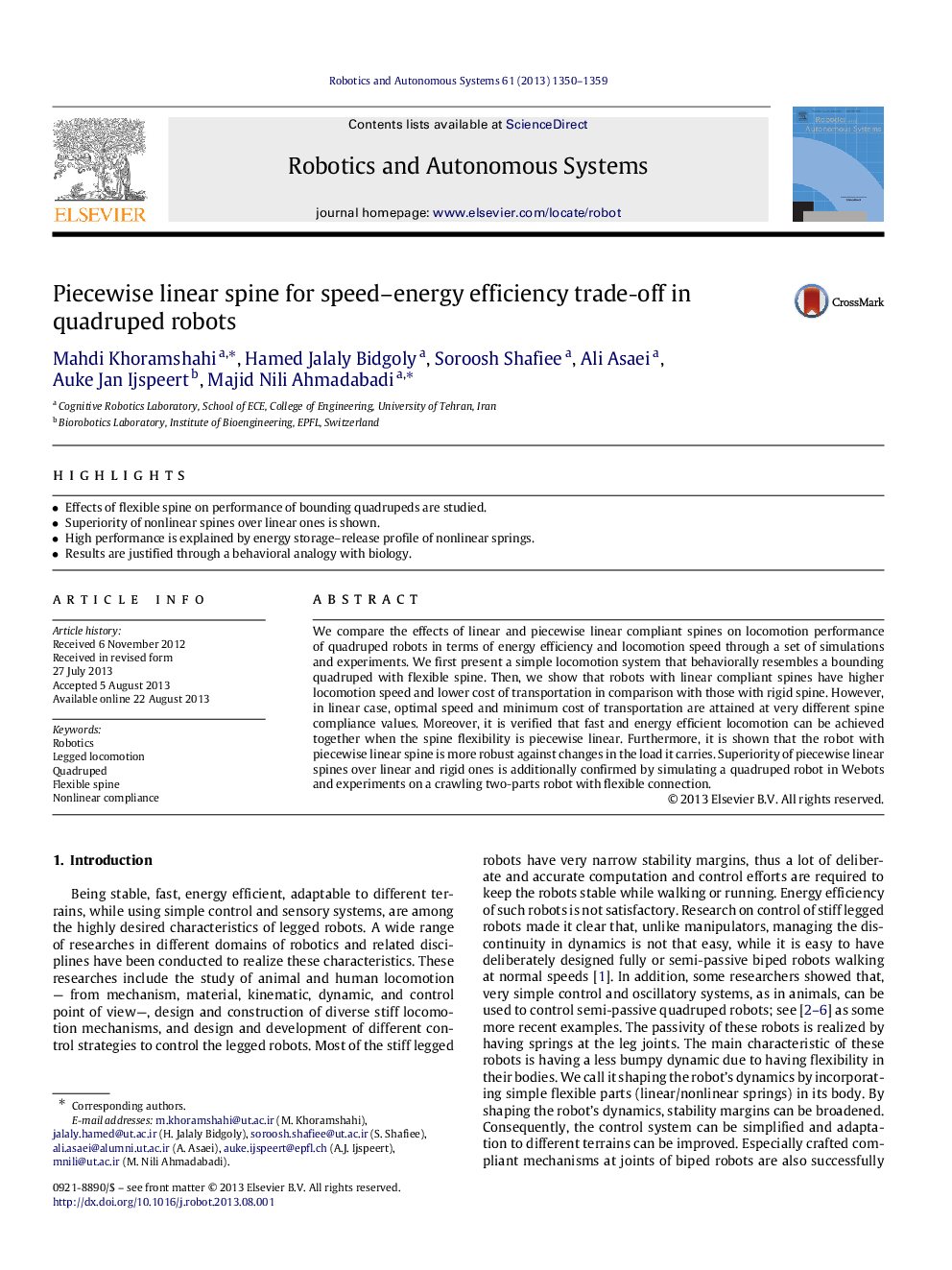| Article ID | Journal | Published Year | Pages | File Type |
|---|---|---|---|---|
| 411336 | Robotics and Autonomous Systems | 2013 | 10 Pages |
•Effects of flexible spine on performance of bounding quadrupeds are studied.•Superiority of nonlinear spines over linear ones is shown.•High performance is explained by energy storage–release profile of nonlinear springs.•Results are justified through a behavioral analogy with biology.
We compare the effects of linear and piecewise linear compliant spines on locomotion performance of quadruped robots in terms of energy efficiency and locomotion speed through a set of simulations and experiments. We first present a simple locomotion system that behaviorally resembles a bounding quadruped with flexible spine. Then, we show that robots with linear compliant spines have higher locomotion speed and lower cost of transportation in comparison with those with rigid spine. However, in linear case, optimal speed and minimum cost of transportation are attained at very different spine compliance values. Moreover, it is verified that fast and energy efficient locomotion can be achieved together when the spine flexibility is piecewise linear. Furthermore, it is shown that the robot with piecewise linear spine is more robust against changes in the load it carries. Superiority of piecewise linear spines over linear and rigid ones is additionally confirmed by simulating a quadruped robot in Webots and experiments on a crawling two-parts robot with flexible connection.
